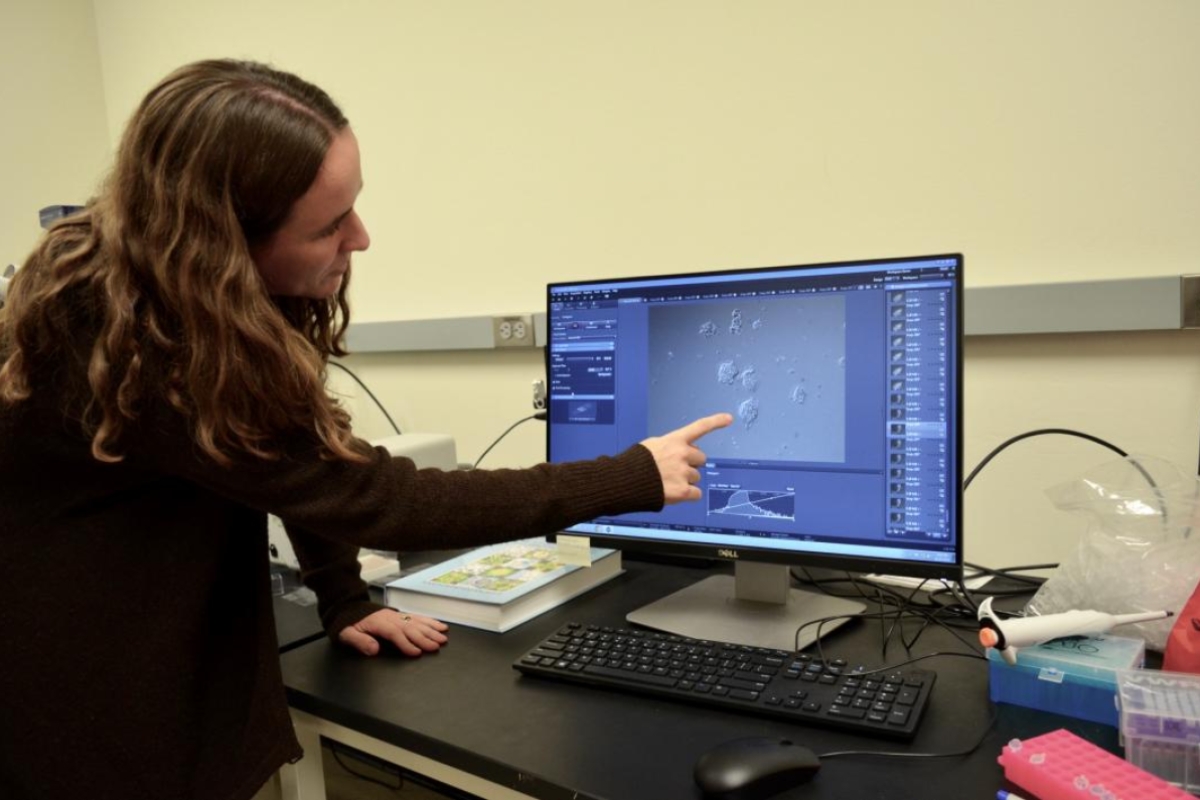New device needed to shatter bottleneck in microbial research

A new device designed in a School of Life Sciences lab could break a bottleneck on microbial research and allow scientists to better characterize the role of microbiomes.
There’s an entire world of microbes invisible to the human eye. Countless microbial communities live everywhere from in the soil to human skin to the stomachs of animals. Surprisingly, despite the fact that they influence everything from climate to human health, scientists don’t fully understand their impact.
Yet understanding what role these microbes play is important enough for the White House Office of Science and Technology Policy to recently launch a National Microbiome Initiative. According to Gillian Gile, a microbiologist and associate professor with the Arizona State University School of Life Sciences, microbiomes are an increasingly hot topic to study. However, analyzing these microbes can be challenging, in part because the tools scientists currently have to analyze them carry limitations.
Gile studies the symbiotic relationship between termites and the microscopic organisms living in their hindguts called protists. However, it’s difficult to collect enough of these protists to research their entire genome. Using a glass micropipette, Gile and her trainees manually pick out individual cells from a termite’s hindgut while peering through a microscope. Considering they need millions of cells for various experiments, it’s a time-consuming process that significantly delays research.
“This is the major bottleneck in our research,” Gile said. “Some things are impossible to do because there’s no way you can pick enough cells in the first place, and some things are just harder because it takes so long.”
Gile and Katalina Peterson, an undergraduate majoring in applied biological sciences, have started a new project to design and manufacture a device that could possibly give microbiologists in any field an easier way to find out what types of microbes exist in a particular area. By using an electric field and a tiny sorting system designed by Peterson and her collaborators, ASU professor Mark Hayes and research assistant Claire Crowther, the device will theoretically separate millions of protist species within a community, such as in a termite’s hindgut, based on genetic and physical traits. Once the species are identified and sorted, scientists could then begin studying how those microbes influence areas such as the environment or human health.
Currently, researchers rely on two methods to identify the protists in a microbial community. They can categorize individual cells by sight, which can create inconsistent results. Alternatively, they can sequence a gene fragment from every member of the community, but that doesn’t tell scientists what the microbes look like. Scientists can understand part of the picture by comparing the data between both methods, but Gile said adding a third could reveal new information.
“It’s almost like adding a sixth sense,” Gile said. “Right now, we can look at our sequences or look with our eyes, but this will allow us to look at microbes in a way that’s independent of those other two methods.”
While similar technology has been created, nothing like this has been done before with microbes. The project was initially inspired by Hayes’ research in the School of Molecular Sciences. His lab created a similar, smaller device that sorts viruses and served as a jumping-off point for Gile’s device.
“We’ve known from the beginning that it’d be rough to figure out how to do this,” Peterson said. “We’re like Goldilocks right now, trying to get it just right.”
Peterson, who is leading the research, is currently in the project’s manufacturing phase after settling on a design during the summer. Once they’ve produced a prototype by using lasers to cut a special plastic, they will begin testing the device and make improvements to the design as needed.
Gile added that the device wouldn’t be limited to microbiologists studying termite hindguts. Theoretically, she said, any microbiologist could adjust the device to aid their research. School of Life Sciences professor Susanne Neuer, who studies microbial communities in the ocean, said she could put the device to use in oceanography.
“The technique is certainly intriguing,” Neuer said. “I imagine I could use it to separate complex protist communities in the ocean to better investigate their role in the degradation of organic matter and the ocean’s carbon cycle.”
Funded by a National Science Foundation Early-Concept Grant for Exploratory Research (EAGER), Gile and Peterson hope the device can be used to help microbiologists in many disciplines contribute to foundational science that will allow researchers ask bigger and more complex questions about the microbiome’s impact on the world.
More Science and technology

Scientists discover new turtle that lived alongside 'Lucy' species
Shell pieces and a rare skull of a 3-million-year-old freshwater turtle are providing scientists at Arizona State University with…

ASU named one of the world’s top universities for interdisciplinary science
Arizona State University has an ambitious goal: to become the world’s leading global center for interdisciplinary research,…

ASU and Thailand advance semiconductor collaboration through workforce development initiatives
As Thailand accelerates efforts to strengthen its semiconductor ecosystem, Arizona State University and Thai partners are…






